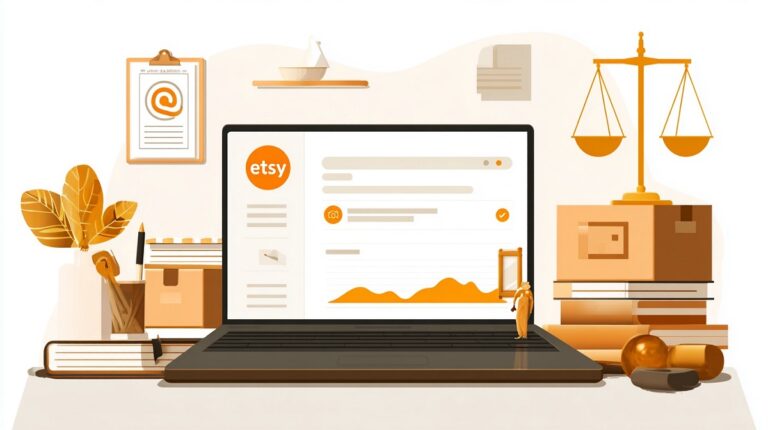Every company, regardless of size or industry, faces one common challenge: keeping operational costs under control.
Cutting costs isn’t about extreme downsizing or compromising quality; it’s about identifying unnecessary spending, streamlining operations, and using smarter systems.
In 2025, when inflation and digital infrastructure expenses keep climbing, the key to reducing monthly costs lies in small, focused adjustments that yield consistent savings.
Most businesses can trim 10–20% off their monthly expenses within 90 days without layoffs or major restructuring by targeting the right areas.
1. Audit All Recurring Subscriptions

Companies often underestimate how much they pay for unused or overlapping digital tools. A SaaS subscription audit should be your first step.
List every platform used: C, analytics, design, and accounting, and check usage rates. Cancel or downgrade what’s redundant.
| Type of Tool | Average Monthly Cost (per user) | Common Alternatives | Quick Win |
| Project Management | $15–$25 | ClickUp, Notion, Trello | Consolidate into one tool |
| CRM | $30–$60 | HubSpot Free, Zoho | Switch to the tiered or free version |
| Cloud Storage | $10–$50 | Google Workspace, Dropbox | Merge accounts or delete inactive ones |
A quarterly review ensures that recurring payments match actual usage and business value.
2. Switch to Energy-Efficient Systems
Electricity can silently drain company budgets. Offices that replace halogen or fluorescent lighting with LED can cut lighting costs by up to 70%.
Installing smart thermostats and motion sensors further reduces wastage during off-hours.
Small manufacturers and warehouses benefit from variable frequency drives (VFDs) on motors, which lower energy consumption during idle periods
Documenting utility bills month by month helps track measurable progress.
| Upgrade | Cost Range | Payback Period | Typical Savings |
| LED Retrofit | $1,000–$3,000 | 12–18 months | 50–70% lighting cost reduction |
| Smart Thermostat | $150–$300 | 6–12 months | 10–15% HVAC savings |
| VFD Motor Control | $2,000–$5,000 | 18–24 months | 15–30% energy reduction |
3. Outsource Non-Core Functions

Accounting, HR, and IT management often cost more in-house than through specialized outsourcing.
Hiring external experts lets you pay only for output, not full salaries and benefits. For many small companies, outsourcing payroll alone can cut admin costs by 40%.
Midway through this optimization process, businesses often realize they need reliable partners for strategic roles. Partnering with firms like Ned Capital Recruitment allows companies to access top-level board and leadership talent on flexible terms, ensuring experienced decision-makers guide efficiency programs without adding long-term payroll strain.
When outsourcing, focus on tasks that don’t directly generate profit but consume time IT support, bookkeeping, legal compliance, and recruitment.
4. Negotiate Supplier Contracts Annually
Suppliers rarely adjust pricing downward on their own. Annual renegotiation, backed by volume forecasts or multi-year commitments, can yield discounts of 5–15%.
Where possible, consolidate orders with fewer suppliers to increase leverage. Compare per-unit costs, payment terms, and delivery reliability rather than just sticker prices.
| Expense Type | Typical Negotiation Leverage | Annual Savings Potential |
| Office Supplies | Medium | 8–12% |
| Logistics / Courier | High | 10–20% |
| Maintenance & Repairs | Low | 5–10% |
| Raw Materials | High | 10–25% |
Even small service providers, cleaners, couriers, or IT vendors ten reduce prices for prompt or consolidated payments.
5. Optimize Employee Work Schedules

Labor is one of the biggest monthly expenses. Flex scheduling or hybrid models can reduce electricity, internet, and heating costs while improving productivity.
Tracking project outputs instead of fixed office hours prevents paying for idle time.
For retail or production teams, rotating shifts based on traffic or demand avoids overstaffing.
Overtime reduction programs often save companies 10–15% in payroll within weeks.
6. Automate Routine Administrative Tasks
Automation doesn’t require a full-scale digital transformation. Affordable tools can manage invoicing, reporting, and document tracking. king
Even a simple CRM integration or automated invoice reminder system saves hours of manual work weekly.
Examples include Zapier (workflow automation), QuickBooks (automated invoicing), and Google Sheets scripts for data synchronization.
Businesses that automate 20% of administrative work typically save one full employee’s monthly salary within the first quarter.
| Task Automated | Time Saved per Month | Tools to Use | Annual Savings (Est.) |
| Invoice Reminders | 10 hours | QuickBooks, Xero | $2,000–$3,000 |
| Expense Approvals | 6 hours | Zoho Flow, Monday | $1,000–$2,000 |
| Social Media Posting | 8 hours | Buffer, Hootsuite | $1,500–$2,500 |
7. Re-Evaluate Office Space and Leasing Terms
Post-pandemic, many firms still pay for underused office space.
Switching to smaller locations, shared coworking areas, or partial remote work can slash rent and utilities by 30–50%.
If relocation isn’t viable, renegotiate the lease term; landlords often prefer a reduced rate over vacancy.
Document how many employees are onsite versus remote to calculate true space usage.
Reconfigure unused meeting rooms into sub-leased offices for freelancers or partner teams.
8. Buy Used or Refurbished Equipment

From laptops to forklifts, refurbished hardware saves up to 40% compared to new purchases.
Certified refurbished items typically come with warranties and similar performance guarantees.
For offices, bulk purchasing used furniture and reconditioned electronics avoids capital spikes while maintaining quality standards.
| Item | New Price | Refurbished | Savings |
| Laptop (Business Grade) | $1,200 | $750 | 37.5% |
| Printer / Copier | $900 | $500 | 44% |
| Office Chair | $250 | $120 | 52% |
9. Consolidate Banking and Payment Fees
Banking fees, transaction costs, and payment processor charges accumulate silently.
Switching to business accounts with flat monthly fees or negotiating merchant rate tiers can cut 1–2% from total revenue leakage.
If you process high transaction volumes, consider alternative gateways like Wise, Revolut, or Payoneer.
Always compare hidden fees (currency conversion, cross-border, chargebacks) to real transaction costs, not advertised rates.
| Transaction Type | Typical Fee | Negotiated Rate | Annual Impact (on $100k turnover) |
| Credit Card Processing | 2.9% | 1.8% | +$1,100 saved |
| Bank Wire Transfer | $25 | $10 | +$900 saved |
| Currency Conversion | 3% | 1% | +$2,000 saved |
10. Build a Continuous Cost-Control Culture

The most sustainable savings come from mindset, not one-time cuts
Encourage departments to identify small inefficiencies monthly, idle licenses, excess print costs, and redundant vendors.
Recognize employees who propose and implement savings ideas.
Establish internal “cost committees” or use shared dashboards showing monthly expense progress.
Over time, even small wins compound. A $200 saving per department per month equals $24,000 per year in mid-sized firms.
Sustained cost discipline keeps profits growing without new revenue.
Final Thoughts
Reducing monthly business costs is not about drastic downsizing; it’s about precision. The companies that thrive are those that regularly review, renegotiate, and re-align spending to their actual operations.
By focusing on these ten simple fixes-subscription audits, energy efficiency, outsourcing, supplier negotiation, automation, and space optimization- any company can achieve immediate, measurable results.
The key is consistency: cost control should become a routine practice embedded in company culture rather than a one-time effort.



